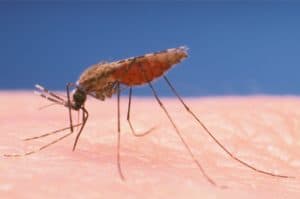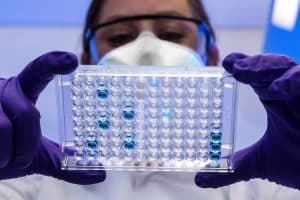NICE recommends two cystic fibrosis treatments
pharmafile | January 25, 2013 | News story | Sales and Marketing | Colobreath, Forest Labs, Novartis, Tobi Podhaler, cystic fibrosis
NICE has given final recommendation to two new inhalers for cystic fibrosis (CF) patients.
Forest Lab’s Colobreath (colistimethate sodium) and Novartis’ Tobi Podhaler (tobramycin) are dry powders for inhalation to treat the lung infections which frequently affect patients with the condition.
The primary cause of death in CF patients is respiratory failure resulting from chronic pulmonary infection caused by Pseudomonas aeruginosa. The rival products both aim to make these infections easier and faster to treat than the current standard treatment by allowing treatment via a dry powder inhaler rather than the current standard nebuliser administration.
Both products are dry powder reformulations of decades-old drugs which the respective companies has reformulated to allow administration as a dry powder rather than via a nebuliser.
NICE had originally rejected Forest’s product, but has changed its mind after the company lowered its prices via a new patient access scheme.
Colobreath is now recommended as an option for treating chronic pulmonary infection caused by Pseudomonas aeruginosa in people with cystic fibrosis, only if:
• they would clinically benefit from continued colistimethate sodium but do not tolerate it in its nebulised form and thus tobramycin therapy would otherwise be currently considered and
• the manufacturer provides colistimethate sodium DPI with the discount agreed as part of the patient access scheme to primary, secondary and tertiary care in the NHS.
Tobramycin DPI is recommended as an option for treating chronic pulmonary infection caused by Pseudomonas aeruginosa in people with cystic fibrosis only if:
• nebulised tobramycin is considered an appropriate treatment, that is, when nebulised colistimethate sodium is contraindicated, not tolerated or has not produced an adequate clinical response, and
• the manufacturer provides tobramycin dry powder with the discount agreed as part of the patient access scheme to primary, secondary and tertiary care in the NHS. Cystic fibrosis is one of the UK’s most common life-threatening inherited diseases, and currently affects around 8,000 people.
Tobramycin sodium dry powder for inhalation (DPI) is inhaled using a breath activated, hand-held device and works by decreasing the amount of bacteria (Pseudomonas aeruginosa) in the lungs. Colistimethate sodium DPI is also inhaled with a breath activated, hand-held device. It works by disrupting the structure of bacterial cells, which kills the bacteria.
The Committee noted that there was no clinical and cost effectiveness evidence comparing colistimethate sodium DPI with nebulised colistimethate sodium, the preferred comparator according to clinical specialists.
The Committee considered whether there were any groups of people who could benefit from colistimethate sodium DPI who would otherwise receive nebulised tobramycin. The only group identified were those benefiting from continued nebulised colistimethate sodium but were unable to tolerate it twice daily in its nebulised form. The Committee noted the Assessment Group’s analysis resulted in colistimethate sodium DPI being slightly less effective compared with nebulised tobramycin but with substantial cost savings.
The Committee concluded that despite the uncertainties associated with the clinical- and cost-effectiveness evidence, it could recommend colistimethate sodium DPI as a treatment option for people who would clinically benefit from continued colistimethate sodium, but cannot tolerate it in its nebulised form, and provided that the revised patient access scheme is operational in primary, secondary and tertiary settings.
The Committee noted that the results of the economic analysis for tobramycin DPI compared with nebulised tobramycin showed that tobramycin DPI was cheaper and slightly more effective, although this was associated with some uncertainty. Despite the limitations of data and uncertainty in the model, the Committee agreed it was reasonable to conclude that tobramycin DPI was a cost effective use of NHS resources in CF patients who would otherwise have been treated with nebulised tobramycin.
The final draft guidance (final appraisal determination / FAD) can be found on the NICE website at: http://guidance.nice.org.uk/TA/Wave24/14
Final guidance is expected to be published in March 2013.
Andrew McConaghie
Related Content

Novartis receives SMC approval for early breast cancer treatment
Novartis has announced that its treatment for early breast cancer, Kisqali (ribociclib), has received approval …

Novartis candidate for Sjögren’s disease presents positive results
Novartis has reported positive results from two phase 3 clinical trials – NEPTUNUS-1 and NEPTUNUS-2 …

First malaria medicine for infants under 4.5kg receives approval
Coartem (artemether-lumefantrine) Baby, or Riamet, has been approved by Swissmedic as the first malaria medicine …






